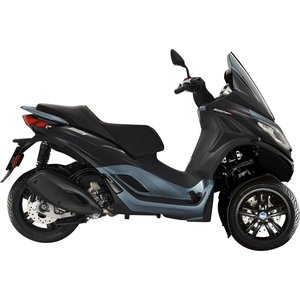Piaggio MP3 300 (2009 – 2018): A Three-Wheeled Revolution Tested
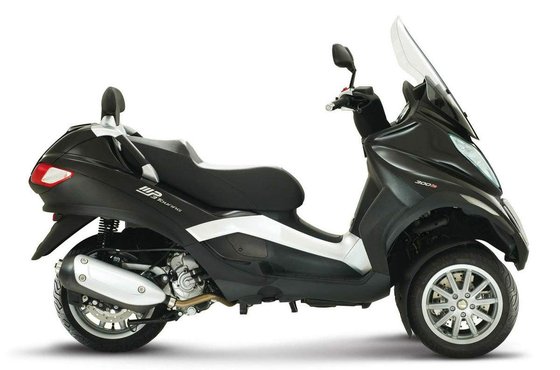
Introduction
The Piaggio MP3 300 isn’t just a scooter—it’s a statement. From 2009 to 2018, this three-wheeled marvel redefined urban mobility, blending motorcycle agility with car-like stability. Whether weaving through traffic or carving country roads, the MP3 300’s dual front wheels and tilting chassis offered a riding experience unmatched by conventional two-wheelers. Having spent time with this generation, it’s clear why over 100,000 units were sold globally: it’s practical, thrilling, and unapologetically innovative. Let’s dive into what makes the MP3 300 a cult favorite.
Design: Where Engineering Meets Personality
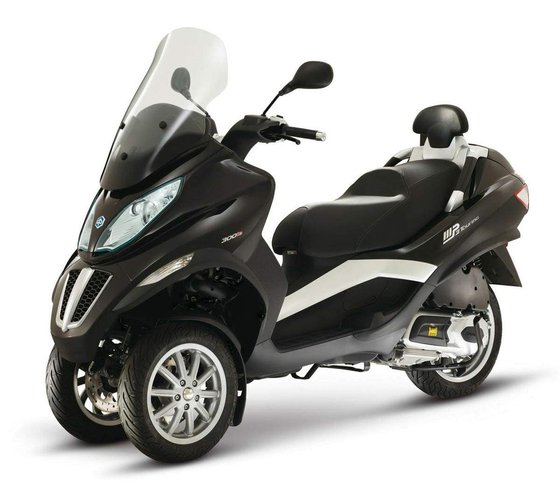
The MP3 300’s design screams ingenuity. The dual front wheels—mounted on a parallelogram suspension—dominate the visuals. This setup isn’t just for show: it allows the scooter to tilt like a traditional bike while gripping the road with the confidence of a small car. The Touring model added refined touches like a honeycomb front grille and an adjustable windscreen, which splits airflow to reduce turbulence. At 2,180 mm (85.8 in) long and 780 mm (30.7 in) seat height, it’s approachable for riders of all statures.
Color options like Cosmo Black and Antares Red gave it flair, while the 2016 Sport/Business variants introduced matte finishes and chrome accents. Storage is a highlight—the Touring’s 65L under-seat compartment fits a full-face helmet and groceries, accessible via a rear hatch. Practicality? Check. Style? Double-check.
Engine and Performance: Small Displacement, Big Personality
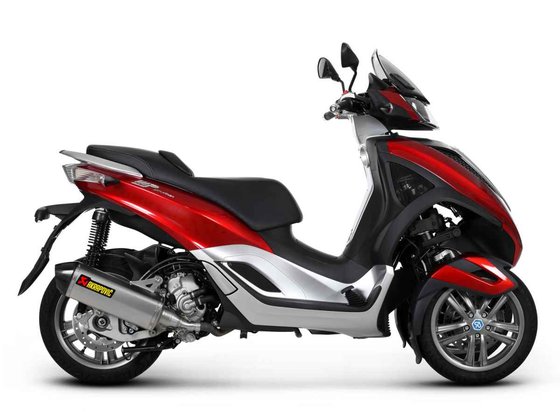
The 278cc Quasar engine is the heart of the MP3 300. With 22–25 HP and 23.2–24 Nm of torque (17–17.7 lb-ft), it’s no drag racer, but the liquid-cooled single-cylinder shines in urban settings. Paired with a CVT belt drive, acceleration is smooth, hitting a top speed of 125 km/h (77.7 mph)—enough for highway sprints.
The Hybrid 300ie (2010–2013) added a 3 kW electric motor, boosting low-end grunt. In Hybrid Power mode, it felt zippier off the line, though the 257 kg (566 lbs) dry weight was noticeable. Fuel efficiency? A claimed 1.7 L/100 km (141 MPG) for the standard model, while the Hybrid promised 20 km (12.4 miles) of electric-only range.
Ride Impressions:
- City Riding: The MP3’s narrow 760 mm (29.9 in) width lets it filter traffic like a pro. The front wheels laugh at potholes.
- Highway: Stable at 100 km/h (62 mph), though wind buffeting kicks in without the Touring’s tall screen.
- Twisties: Lean angles surprised me—the front end grips like a gecko, inspiring mid-corner confidence.
Technology: Ahead of Its Time
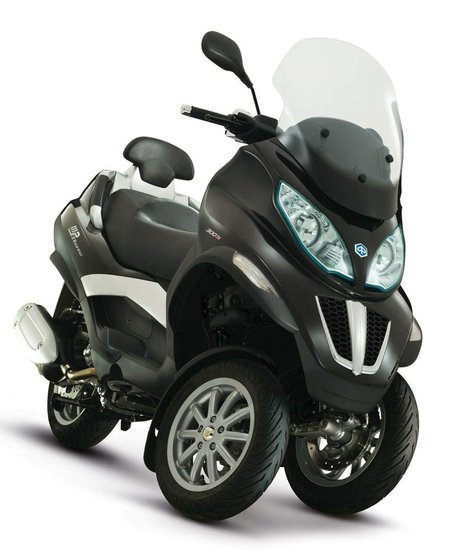
Piaggio packed the MP3 300 with tech that’s still relevant:
- Ride by Wire: Throttle response felt crisp, avoiding the jerky feel of older CVTs.
- Electrohydraulic Lock: Park on a slope? The front suspension locks upright—no kickstand needed.
- Hybrid Modes: Switch between Electric, Hybrid Power, and Hybrid Charge on the fly. Regen braking added a futuristic touch.
- Multimedia Platform: Post-2016 models linked to smartphones, displaying real-time data like torque and fuel economy.
Safety wasn’t an afterthought. Triple disc brakes (dual 240mm front, single rear) delivered stopping power 20% shorter than rivals. Later models added ABS and ASR (traction control), rare in scooters at the time.
Comfort and Practicality: The Daily Grind, Redefined
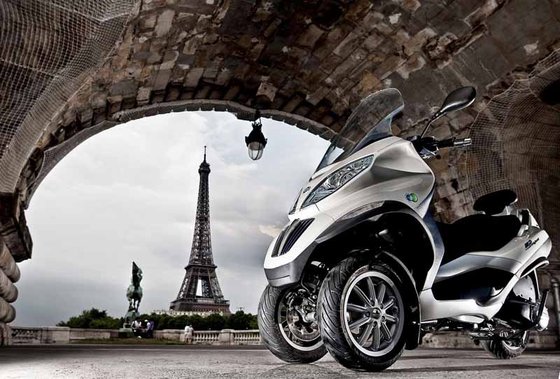
Sliding onto the MP3 300’s saddle feels like settling into a well-worn office chair—upright, supportive, and all-day comfortable. The floorboard accommodates larger riders, and the Touring’s integrated backrest is a passenger’s best friend.
Storage solutions are genius:
- Under-seat: 65L in the Touring (fits a 1m-long object!).
- Front Pocket: Added in 2012, perfect for phones or toll tickets.
- Accessories: Heated grips, leg covers, and a 50L top case turned it into a mini touring rig.
Fueling up every 200–250 km (124–155 miles) became routine, thanks to the 12L (3.2 gal) tank. The Yourban model trimmed weight to 211 kg (465 lbs) for sharper handling, though storage took a hit.
Competition: How Does the MP3 300 Stack Up?
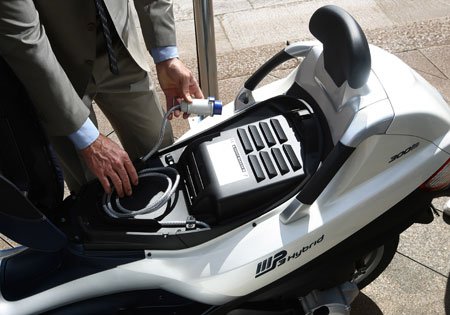
The MP3 300’s three-wheeled niche had few rivals, but let’s compare it to maxi-scooters of its era:
- Yamaha TMAX 500:
- Pros: Faster (44 HP), sportier dynamics.
-
Cons: Higher seat, no stability tech. MP3 wins in rain confidence.
-
Honda Forza 300:
- Pros: Lighter (184 kg / 406 lbs), cheaper maintenance.
-
Cons: Less storage, conventional two-wheel grip.
-
BMW C 400 X:
- Pros: Modern tech (LED lights, TFT dash).
- Cons: Released later (2018); MP3’s hybrid tech was pioneering.
Verdict: The MP3 300’s stability and storage made it king for commuters. Sport riders leaned toward the TMAX, but Piaggio’s innovation still stands out.
Maintenance: Keeping Your MP3 300 in Prime Shape
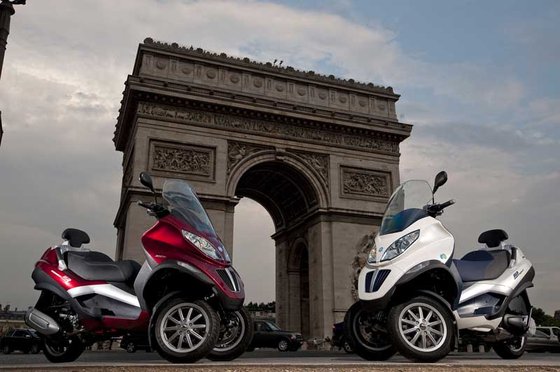
Owning an MP3 300 isn’t high-maintenance, but attention to detail pays off:
- Oil Changes: Use SAE 5W-40 every 5,000 km (3,100 miles). The wet sump holds 1.2L with a filter.
- Belt Drive: Inspect every 12,000 km (7,500 miles). Look for cracks—replacement is DIY-friendly.
- Valve Adjustments: Every 10,000 km (6,200 miles). Intake: 0.10 mm (0.004 in), exhaust: 0.15 mm (0.006 in).
- Tires: Front 1.6 bar (23 psi), Rear 2.8 bar (41 psi). The 12-inch wheels wear evenly if pressures are maintained.
- Coolant: Replace every 2 years. The system holds 2L—use ethylene glycol-based.
Common Upgrades at MOTOPARTS.store:
- High-performance brake pads for sharper stops.
- Windshields with better aerodynamics.
- LED lighting kits for improved visibility.
Conclusion: A Legacy of Innovation
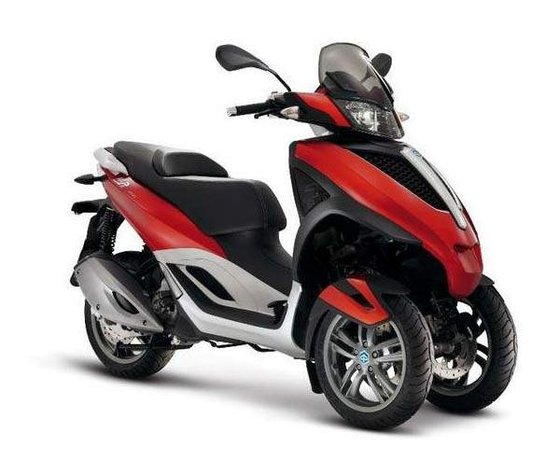
The Piaggio MP3 300 wasn’t just a scooter—it was a mobility revolution. Its blend of stability, practicality, and tech made it a legend among commuters and urban explorers. While newer models have eclipsed its specs, the 2009–2018 generation remains a benchmark for three-wheeled design. Whether you’re dodging Parisian rainstorms or cruising coastal highways, the MP3 300 delivers grins per gallon. And with MOTOPARTS.store’s aftermarket support, keeping yours on the road is a breeze.
Ready to upgrade your MP3? Explore our curated selection of parts and accessories tailored for this iconic scooter.
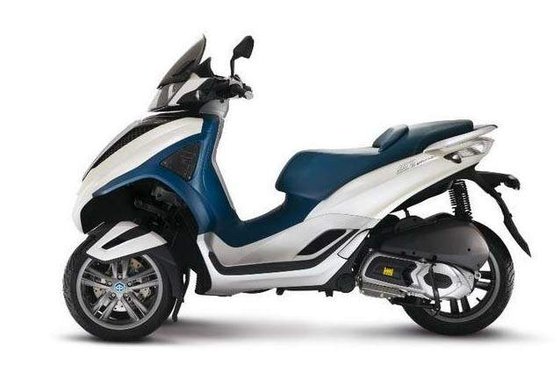






Specifications sheet
| Engine | |
|---|---|
| Stroke: | Four-stroke |
| Fuel type: | Unleaded 95+ RON |
| Max power: | 18 kW | 24.0 hp |
| Max torque: | 24 Nm |
| Fuel system: | Electronic fuel injection (Ride By Wire) |
| Max power @: | 7500 rpm |
| Displacement: | 278 ccm |
| Max torque @: | 6250 rpm |
| Configuration: | Single |
| Cooling system: | Liquid cooled |
| Compression ratio: | 11.0:1 (estimated) |
| Number of cylinders: | 1 |
| Dimensions | |
|---|---|
| Wheelbase: | 1550 mm (61.0 in) |
| Dry weight: | 236 |
| Wet weight: | 257 |
| Seat height: | 780 mm (30.7 in) |
| Overall width: | 760 mm (29.9 in) |
| Cargo capacity: | 65 L under seat |
| Overall height: | 1350 mm (53.1 in) |
| Overall length: | 2180 mm (85.8 in) |
| Fuel tank capacity: | 12 L (3.2 US gal) |
| Drivetrain | |
|---|---|
| Final drive: | belt |
| Transmission: | CVT with torque server |
| Maintenance | |
|---|---|
| Rear tire: | 140/60-14 (spo-t/business) o- 140/70-14 (tou-ing) |
| Engine oil: | 5W-40 API SL |
| Front tire: | 110/70-13 (spo-t/business) o- 120/70-12 (tou-ing) |
| Brake fluid: | DOT 4 |
| Spark plugs: | NGK CR8EKB or NGK CR8EIX |
| Spark plug gap: | 0.7 |
| Coolant capacity: | 2.0 |
| Engine oil capacity: | 1.2 |
| Transmission oil capacity: | 0.25 |
| Engine oil change interval: | Every 5000 km or 2 years |
| Valve clearance (intake, cold): | 0.10 mm |
| Valve clearance (exhaust, cold): | 0.15 mm |
| Recommended tire pressure (rear): | 2.8 bar (41 psi) |
| Recommended tire pressure (front): | 1.6 bar (23 psi) |
| Final drive belt replacement interval: | Every 20,000 km |
| Special Features | |
|---|---|
| Hybrid version: | Available with 3 kW electric motor (257 kg dry weight) |
| Safety systems: | ASR traction control (on ABS models) |
| Instrumentation: | Piaggio Multimedia Platform smartphone integration |
| Front suspension locking: | Electrohydraulic tilt-lock system |
| Chassis and Suspension | |
|---|---|
| ABS: | Available on Sport/Business ABS ASR models |
| Frame: | Double cradle in high-strength tubular steel |
| Rear brakes: | Single 240 mm disc with 1-piston caliper |
| Front brakes: | 2 x 240 mm discs with 2-piston calipers (ABS available on later models) |
| Rear suspension: | Double hydraulic shock absorbers with adjustable preload, 110 mm travel |
| Front suspension: | Articulated quadrilateral with 4 aluminum arms, 85 mm travel |



